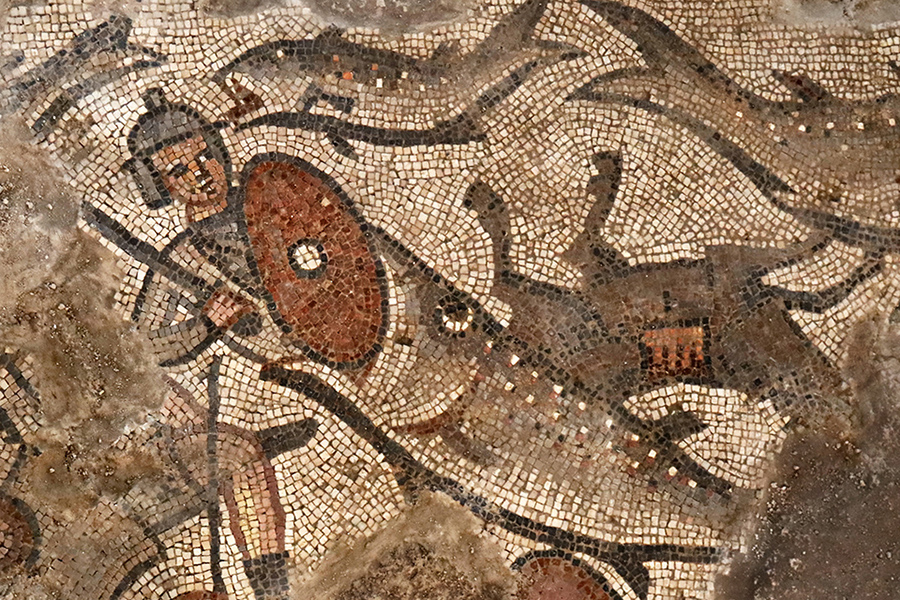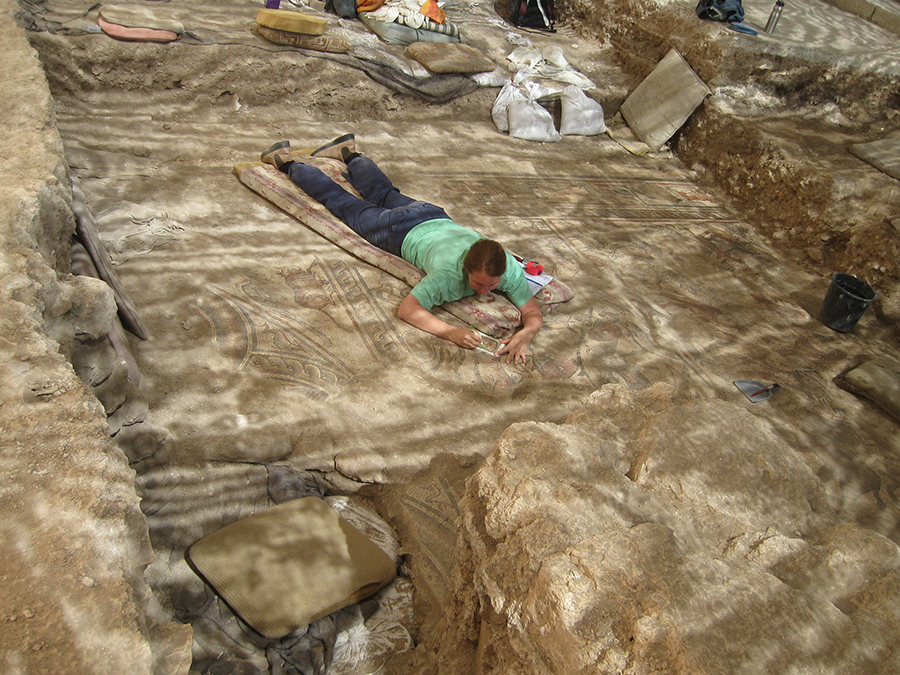Dr. Karen Britt, an assistant professor of art history at Northwest Missouri State University, is the recipient of the Frank A. Dutra Annual Award for the best 2023 article published in Mediterranean Studies.
The Dutra Award Committee for Mediterranean Studies, a peer-reviewed journal published by Pennsylvania State University Press, commended Britt and her collaborator Dr. Ra’anan Boustan, for their approach to the research and publication of artifacts in the Mediterranean.
“We were thrilled, surprised and humbled,” Britt said. “It is really an honor that the committee chose our work because they saw something in our work that is generative – that would generate new ways of thinking. Whenever someone suggests to you that the work that you’re doing has the potential to influence other scholars – it’s an amazing feeling.”
The award carries a prize of $350 and will be presented May 28 at the opening session of the 26th Annual Congress of the Mediterranean Studies Association in Valencia, Spain.

Dr. Karen Britt researches ancient mosaics as part of an excavation team that has uncovered artwork such as this depiction of a fish swallowing one of Pharaoh’s soldiers. (Submitted photo by Jim Haberman)
Britt and Boustan, a research scholar at Princeton University, published their article, “War and Peace in the Elephant Mosaic from Huqoq: Synagogue Art, Classical Historiography, and Roman Imperial Monuments,” about their discovery of mosaics in the late fourth-century synagogue in lower eastern Galilee, Israel. Britt was invited to join the Huqoq Excavation Project team in 2012 as the mosaics specialist.
Mosaics are composed of miniature cubes, called tesserae, that are made of colored limestone and marble. Carved using hand tools, the cubes are fitted together to pave floors or decorate the walls and ceilings of buildings.
More recently, Britt and her collaborators’ research is featured in the April edition of National Geographic Magazine in an article, titled “Surprising Scenes in Stone.”

Dr. Karen Britt is pictured working on mosaics at Huqoq. (Submitted photo by Jim Haberman)
Britt said her research findings have broadened understanding of the subject matter depicted in mosaics.
“Research is like building a house – you start by laying a foundation and then you build on it,” Britt said. “Everything that you do, every article that you publish, is adding a course of stones to the house that you are building, and so this study helps us to understand the larger program of mosaics at the site and it provides us with methodological tools for analyzing other mosaics.”
Britt joined the Northwest faculty in 2019 and teaches courses in the history of art and architecture. She has a bachelor’s degree in classics from the University of Cincinnati, a master’s degree in classical and near Eastern art and archaeology from the University of Minnesota-Twin Cities and a Ph.D. in art history from Indiana University.
“All of the research that I do is linked with my teaching,” Britt said. “I bring into the classroom, even if it’s a subject that’s unrelated to the particular content of the course, both the spirit of inquiry and investigation that archaeology requires to the classes that I teach.”